 sales@vipmytour.com
sales@vipmytour.com 8618611354735
8618611354735
Transport in Beijing
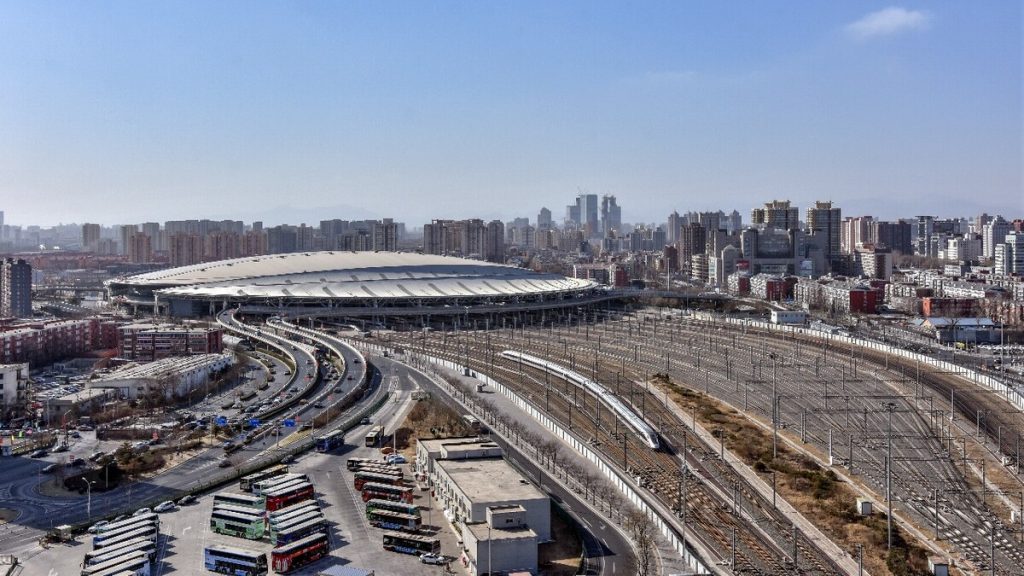
Beijing Capital International Airport (PEK)
Beijing Capital International Airport (BCIA), located in the Chaoyang District of Beijing, China, is a few kilometers southwest of Beijing's center and 25 km to the south of Beijing Daxing International Airport. It is a Class 4F international airport, one of the three largest gateway hub complexes in China, a member of the Bohai Rim International Air Cargo Hub Cluster, and a world mega airport.
Beijing Capital International Airport (BCIA) was built in 1958. On January 1, 1980, the T1 terminal building and the apron, the car park in front of the building, and other ancillary projects were completed and officially put into use. On November 1, 1999, the T2 terminal building was officially put into use, and the T1 terminal building was closed for renovation. On September 20, 2004, the T1 terminal building was re-commissioned. In the spring of 2008, the airport expansion project (T3 terminal building) was completed.
As of 2023, Beijing Capital International Airport (BCIA) has three terminals: T1 (decommissioned), T2 (domestic and international flights to Hong Kong, Macao, and Taiwan), and T3 (domestic and international flights to Hong Kong, Macao, and Taiwan), totaling 1,410,000 square meters. The airport has three runways, with lengths and widths of 3,800 x 60 meters, 3,200 x 50 meters, and 3,800 x 60 meters respectively. There are 314 parking slots and 252 domestic and international routes.
Beijing Daxing International Airport
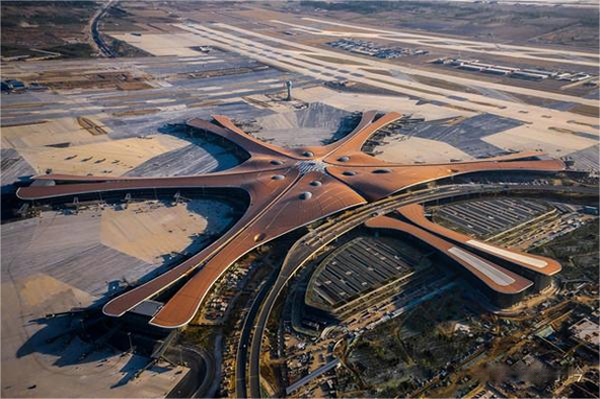
Beijing Daxing International Airport (BDIA), located in Daxing District's Yufa Town and Hebei Province's Langfang Guangyang District, is 46 kilometers north of Tiananmen Square, 67 kilometers north of Beijing Capital International Airport, and 55 kilometers west of Xiongan New Area. It is a Class 4F international airport, a world-class aviation hub, and a new power source for national development.
On December 26, 2014, construction of Beijing's new airport project began. On September 14, 2018, it was named "Beijing Daxing International Airport." On September 25, 2019, Beijing Daxing International Airport officially opened to the public, and Beijing Nanyuan Airport was officially closed. On October 27, 2019, the airport's ports were opened to the public, and the policies of 144-hour visa-free transit for foreigners and 24-hour border inspection-free transit for foreigners were implemented.
As of April 3, 2024, Beijing Daxing International Airport has exceeded one million passengers in 2024, a 17-fold increase over the same period in 2023. It reached one million passengers nearly five months earlier than in 2023.
In 2021, Beijing Daxing International Airport completed a total of 25,501,012,000 passengers throughput, an increase of 55.7% year-on-year, ranking 11th in the country. It had a cargo and mail throughput of 185,942.7 tonnes, an increase of 140.7% year-on-year, ranking 18th in the country, and 211,238 aircraft movements, an increase of 58.7% year-on-year, ranking 12th in the country.
Railway Stations in Beijing
Beijing West Railway Station
Beijingxi Railway Station (北京西站), also known as Beijing West Railway Station, is located in Fengtai District, Beijing. It is a special class station under the jurisdiction of China Railway Beijing Bureau Group Co. Beijing West Railway Station opened on January 21, 1996, and at the time of its opening was one of the largest modern railway passenger stations in Asia. The station was expanded in late 2003 and 2005, and the Beijing Underground Diameter Line was completed in 2015, connecting the station to Beijing.
As of March 2015, Beijing West Railway Station occupies an area of 510,000 square meters, with a total floor area of approximately 700,000 square meters, of which the station building accounts for approximately 500,000 square meters. It has 10 platforms, a total of 18 platform surfaces, and 20 tracks.
Starting from December 20, 2019, the Beijing-Guangzhou high-speed railway station west of Beijing started to pilot electronic passenger tickets.
Beijing South Railway Station
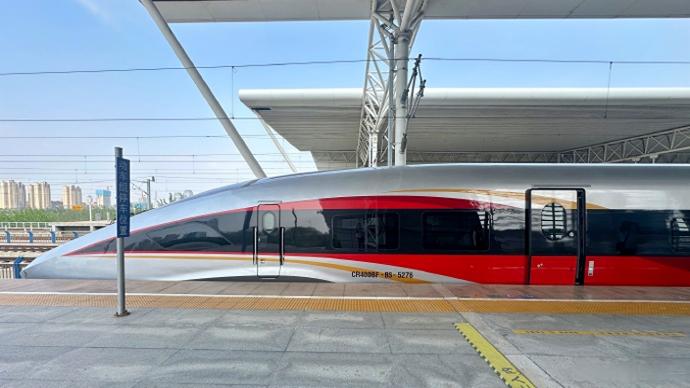
Beijingnan Railway Station (北京南站), located in Fengtai District, Beijing, is a special grade station under the jurisdiction of China Railway Beijing Bureau Group Co. Beijing South Railway Station was built in 1897 and was then called Majiapu Station. It was officially closed for renovation on May 10, 2006, and reopened on August 1, 2008, with the opening of the Beijing-Tianjin Intercity Railway.
As of August 2017, Beijing South Railway Station has a floor area of 320,000 square meters, 24 tracks, and 13 platforms. The platforms are divided as follows: 3 platforms and 5 tracks in the general-speed yard, 6 platforms and 12 tracks in the high-speed yard, and 4 platforms and 7 tracks in the intercity yard.
Beijing Railway Station
Beijing Zhan (北京站), located in Dongcheng District, Beijing, is a railway station operated by Beijing Subway Operation Co. The station is part of Beijing Metro Line 2. Beijing Station was commissioned on January 15, 1971, and is in operation.
According to the official website of the Beijing Subway in July 2022, four entrances and exits are open at Beijing Station, with weekday operating hours from 05:12 to 23:23.
Beijing Subway
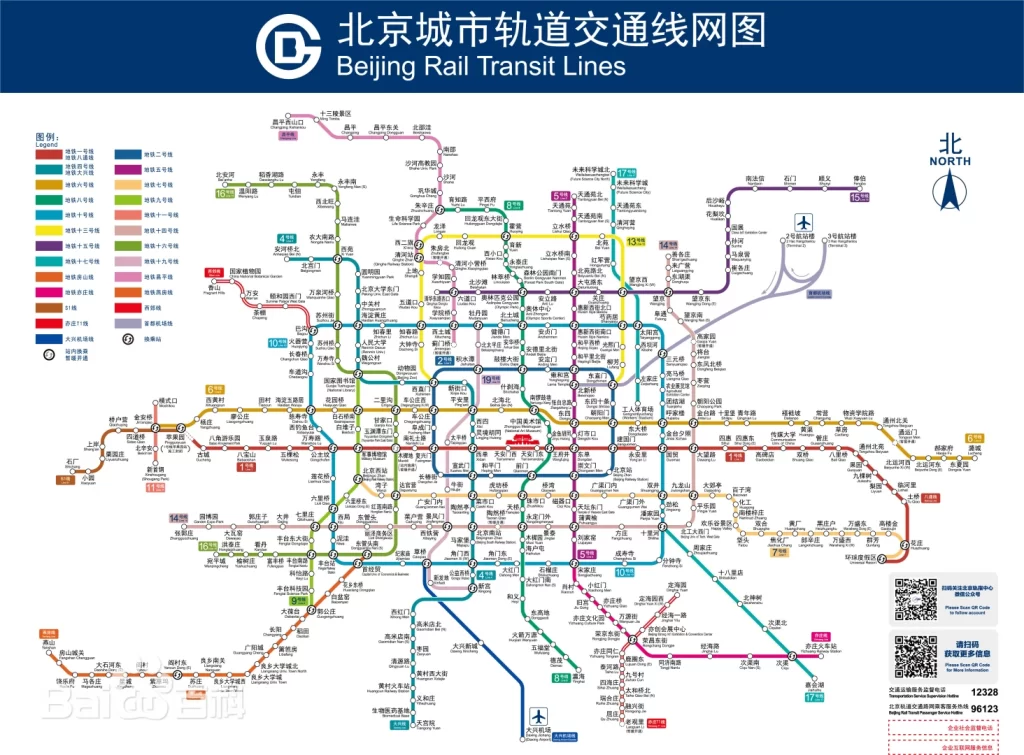
Beijing Subway (北京地铁) is an urban railway system serving Beijing Municipality. It is a member of the International Union of Metros (CoMET), with its first line opening on January 15, 1971, making Beijing the first city in China to open an underground system.
As of December 2023, there are 27 lines operating in the Beijing metro, with an operating mileage of 836 km and 490 stations (including 83 interchange stations). As of December 2023, Beijing Metro has 10 lines under construction. By 2025, the Beijing Metro will operate a network of 30 lines with a total length of 1,177 km.
Beijing Taxi
At present, online taxis are used much more frequently than cruising taxis in Beijing. According to 2023 government statistics, there are about 57,000 cruising taxi drivers in Beijing. There are 13 online taxi platform companies and 72,000 compliant drivers.
Beijing Public Transport
Beijing Public Transport (北京公交) refers to the urban road public transport system serving Beijing, China. It is based on public tram lines and suburban lines, with Bus Rapid Transit, long-distance lines, and customized bus routes as supplements. Beijing buses can be paid for with a bus card or a mobile phone. The Gaode Map App allows you to specify departure and arrival points and check bus routes.
Shared Bicycles
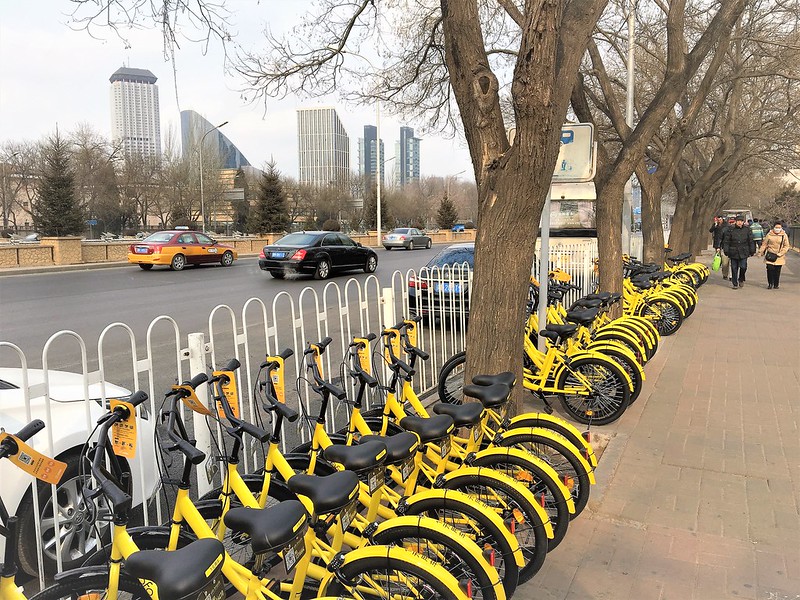
Bicycle sharing is operated by specific companies, using a mobile phone app to unlock and lock the bike, and billing according to the number of hours used or a monthly card for unlimited use at a lower cost. Bicycle sharing helps solve the "last mile" transport problem.


